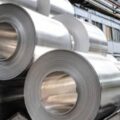The United States has announced the closure of its borders to molten aluminum from China, Russia, Iran and Belarus for unfair competition, something that has been applauded by the North American Aluminum Association. These countries will not be able to enter the United States under the Section 232 exemption that Mexico enjoys as part of the Mexico-United States-Canada Agreement (T-MEC).
Charles Johnson, president and CEO of the Aluminum Association, has stated that this move will help safeguard North America as one of the best places in the world to manufacture aluminum and aluminum products.
Over the past decade, the industry has invested more than $10 billion in new and expanded plants in the United States, including nearly $200 million this year alone.
North American aluminum companies enjoy several important structural advantages, including one of the lowest carbon footprint aluminum productions in the world.
Johnson adds that by working with our T-MEC countries on strong trade enforcement, we can help drive continued growth and investment in the region, creating jobs and capturing as much demand as possible in the years ahead.
This plan is an example of how regional cooperation still works, he points out, and he appreciates the administration’s hard work on this issue.
Aluminum demand in North America (U.S. and Canada) rose 4.3% year-on-year in the first quarter of 2024, according to recent data from the Aluminum Association, the strongest results since 2022.
Global aluminum production is expected to grow by approximately 80% by 2050, thanks to demand for sustainable packaging, safe and efficient vehicles, greener buildings and vital infrastructure.
With sustainability an increasingly important driver of future demand for the material, the Aluminum Association recently completed a report, “Pathways to Decarbonization: A North American Aluminum Roadmap,” which outlines theoretical pathways to achieve industry-wide carbon emission reductions.which outlines theoretical pathways to achieve industry-wide carbon emission reductions consistent with the International Energy Agency’s (IEA) “Net Zero by 2050” goals.
The report concluded that North America enjoys a significant carbon emissions advantage over much of the global aluminum industry.
Looking ahead, access to abundant clean energy and investment in new technologies will be central to achieving ambitious mid-century emissions targets.











